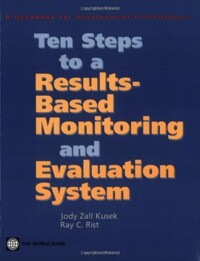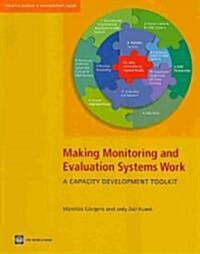
단행본WBI development studies
Ten steps to a results-based monitoring and evaluation system: a handbook for development practitioners
- 발행사항
- Washington, DC : World Bank, 2004
- 형태사항
- xiv, 248 p.: ill.; 24 cm
- ISBN
- 9780821358238
- 청구기호
- 350.14 K97t
- 서지주기
- Includes bibliographical references (p. 231-234) and index
소장정보
| 위치 | 등록번호 | 청구기호 / 출력 | 상태 | 반납예정일 |
|---|---|---|---|---|
이용 가능 (1) | ||||
| 1자료실 | 00014272 | 대출가능 | - | |
이용 가능 (1)
- 등록번호
- 00014272
- 상태/반납예정일
- 대출가능
- -
- 위치/청구기호(출력)
- 1자료실
책 소개
An effective state is essential to achieving socio-economic and sustainable development. With the advent of globalization, there are growing pressures on governments and organizations around the world to be more responsive to the demands of internal and external stakeholders for good governance, accountability and transparency, greater development effectiveness, and delivery of tangible results. Governments, parliaments, citizens, the private sector, NGOs, civil society, international organizations and donors are among the stakeholders interested in better performance. As demands for greater accountability and real results have increased, there is an attendant need for enhance results-based monitoring and evaluation of policies, programs, and projects. The focus of this Handbook is on a comprehensive ten-step model that will help guide development practitioners through the process of designing and building a results-based monitoring and evaluation system. These steps begin with a ""Readiness Assessment"" and take the practitioner through the design, management, and importantly, the sustainability of such systems. The Handbook describes each step in detail, the tasks needed to complete each one, and the tools available to help along the way.
As demands for greater accountability and real results have increased, there is an attendant need for enhanced results-based monitoring and evaluation of policies, programs and projects. This Handbook presents a ten-step model that helps guide development practitioners through the process of designing and building such a system.
As demands for greater accountability and real results have increased, there is an attendant need for enhanced results-based monitoring and evaluation of policies, programs and projects. This Handbook presents a ten-step model that helps guide development practitioners through the process of designing and building such a system.




